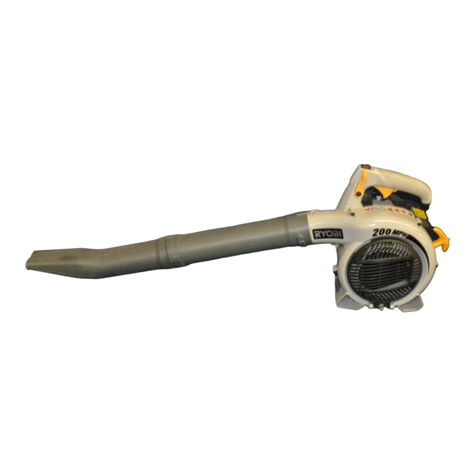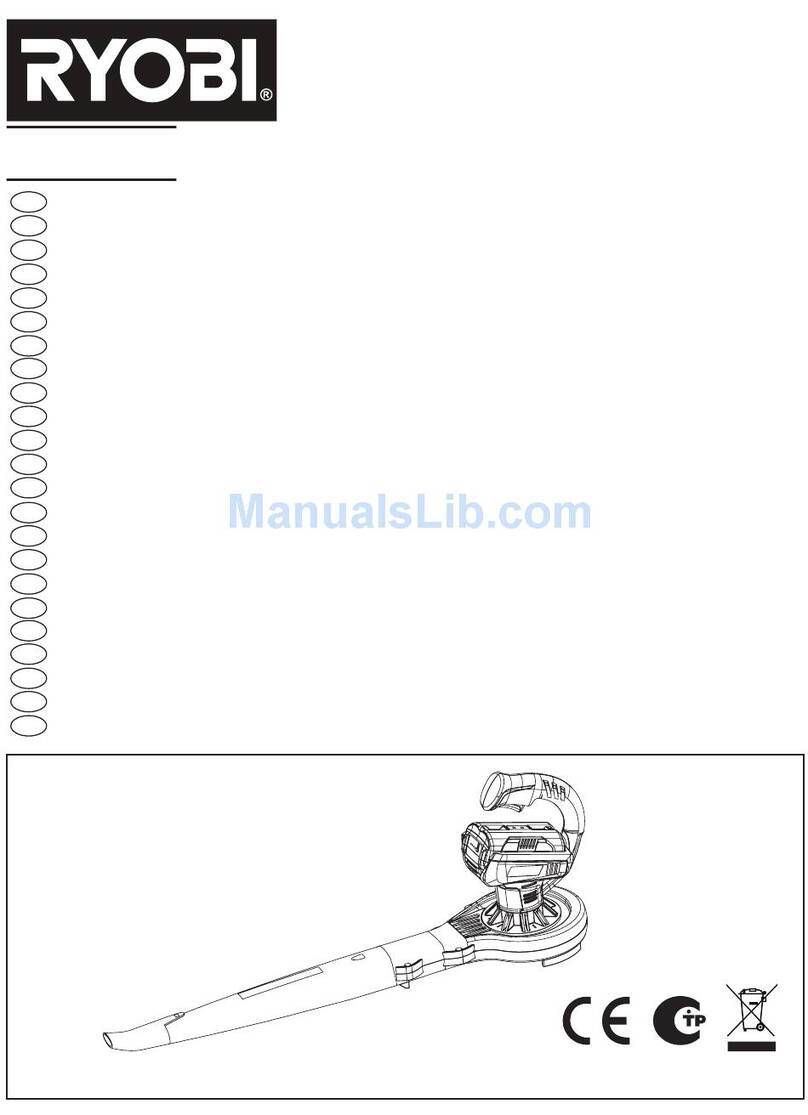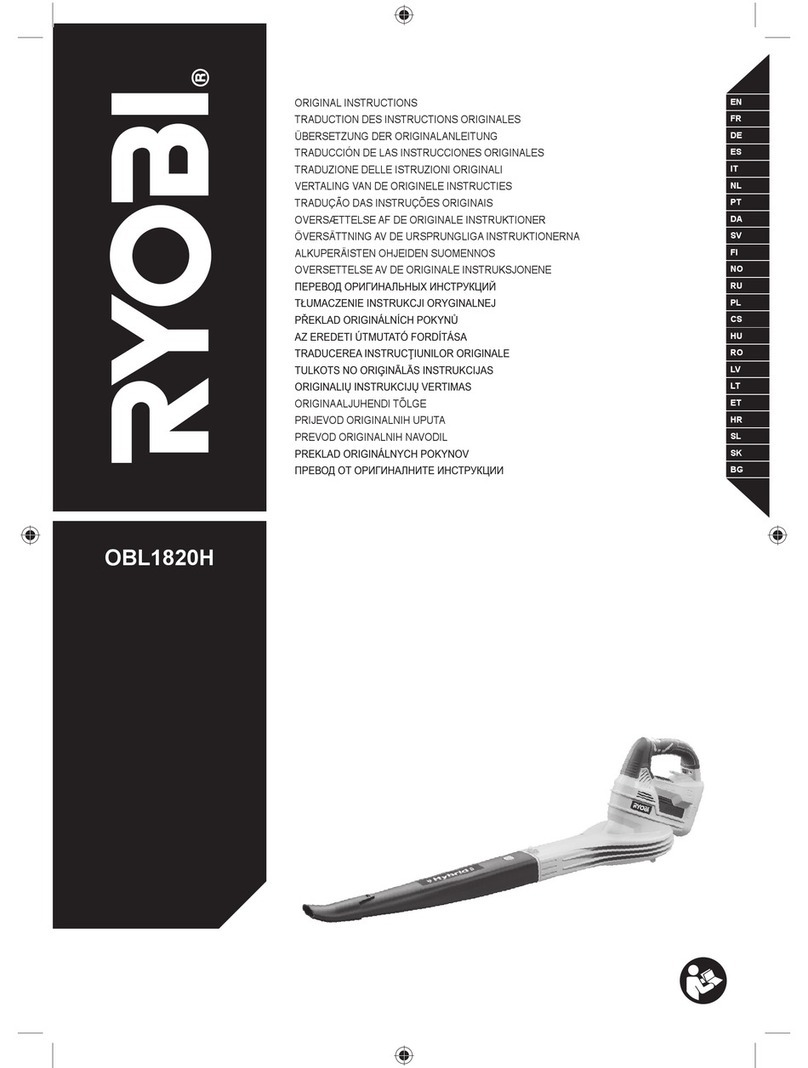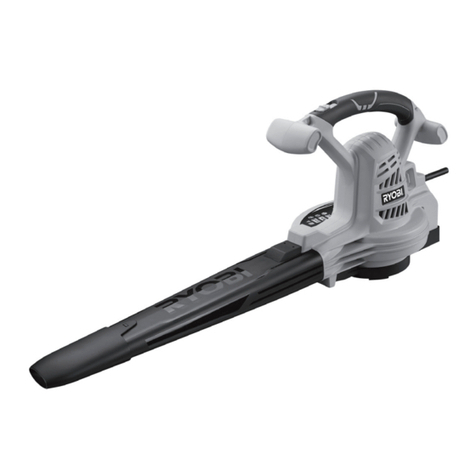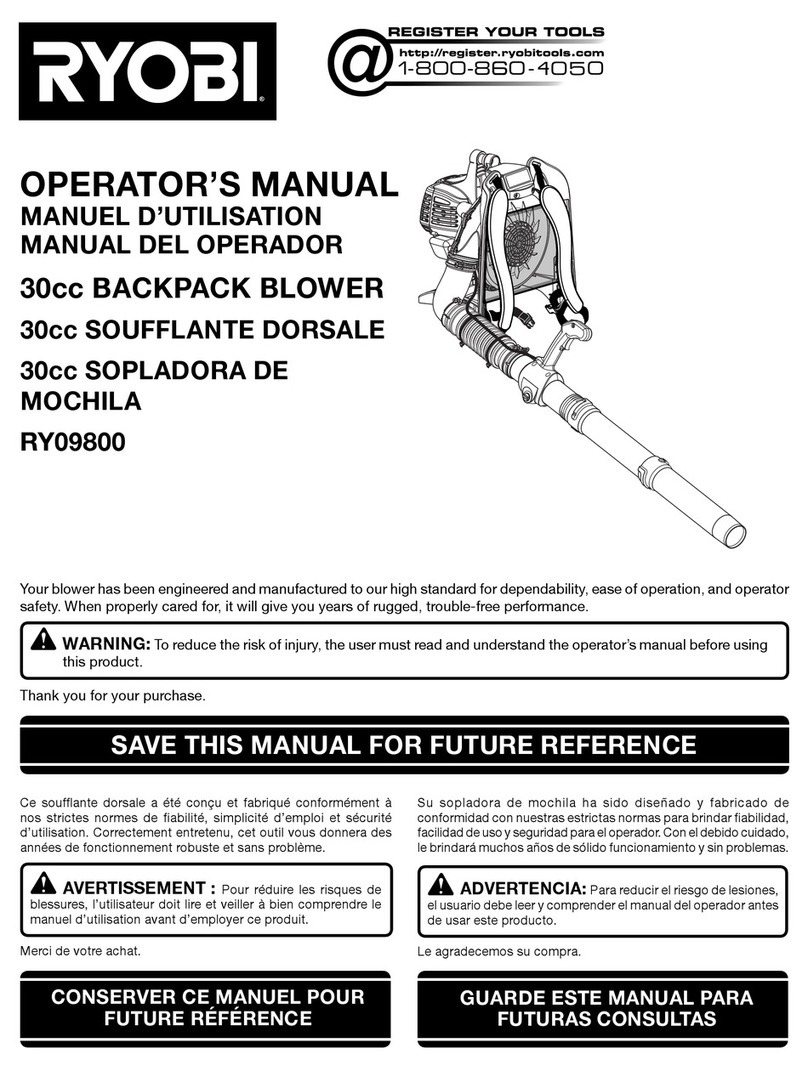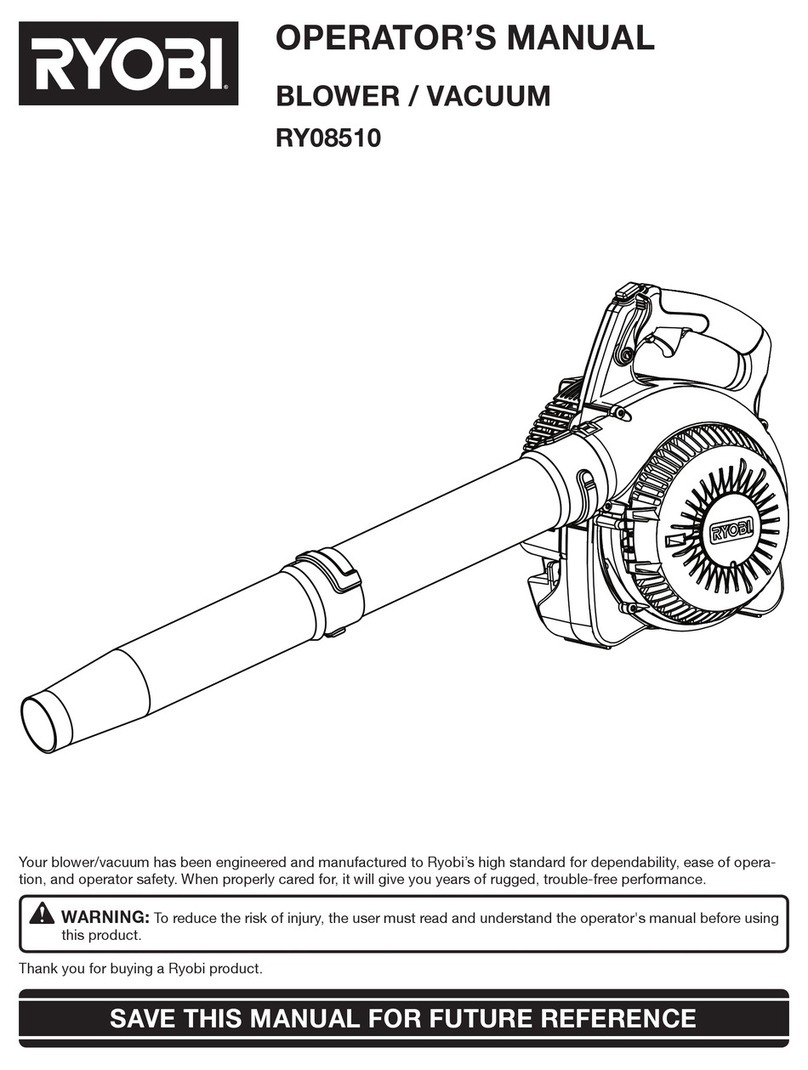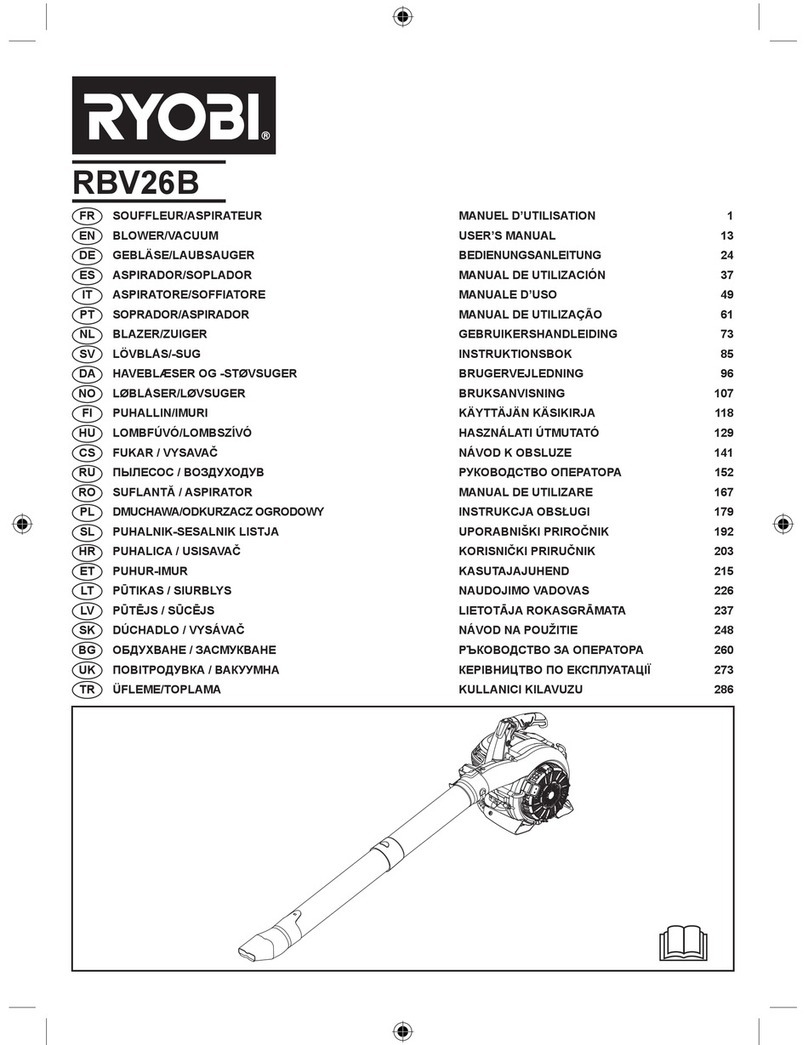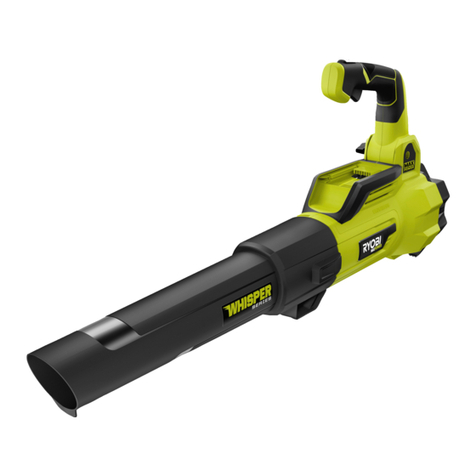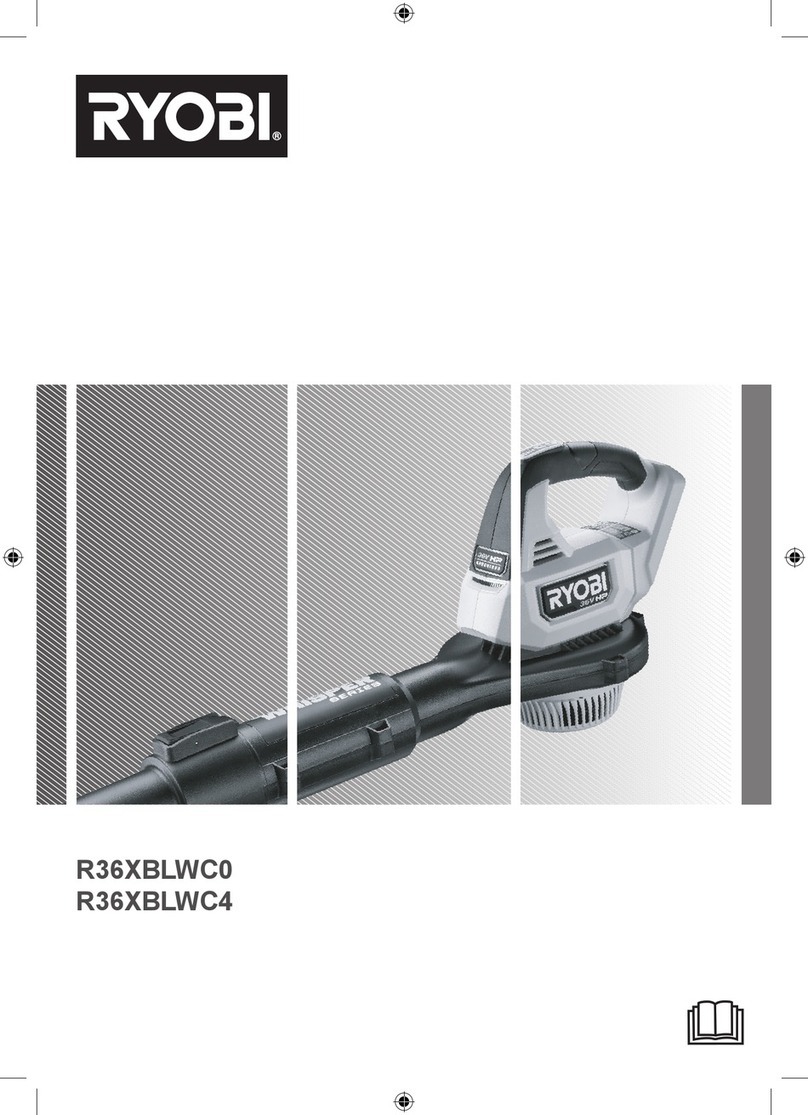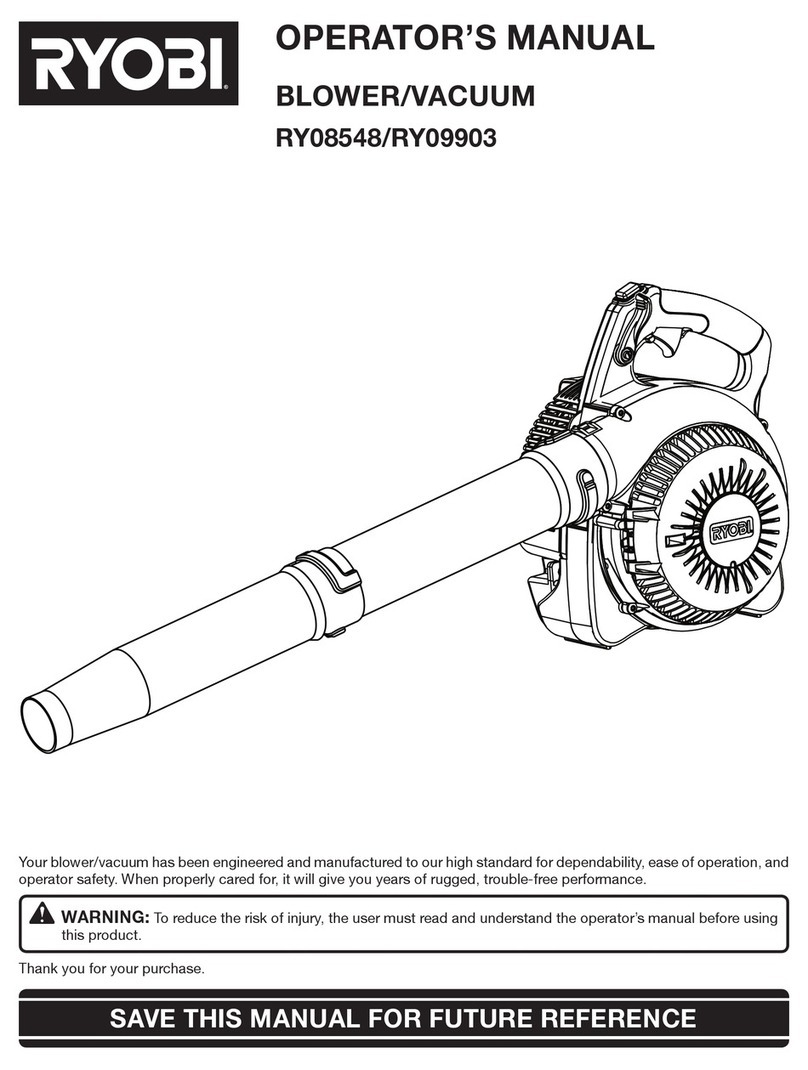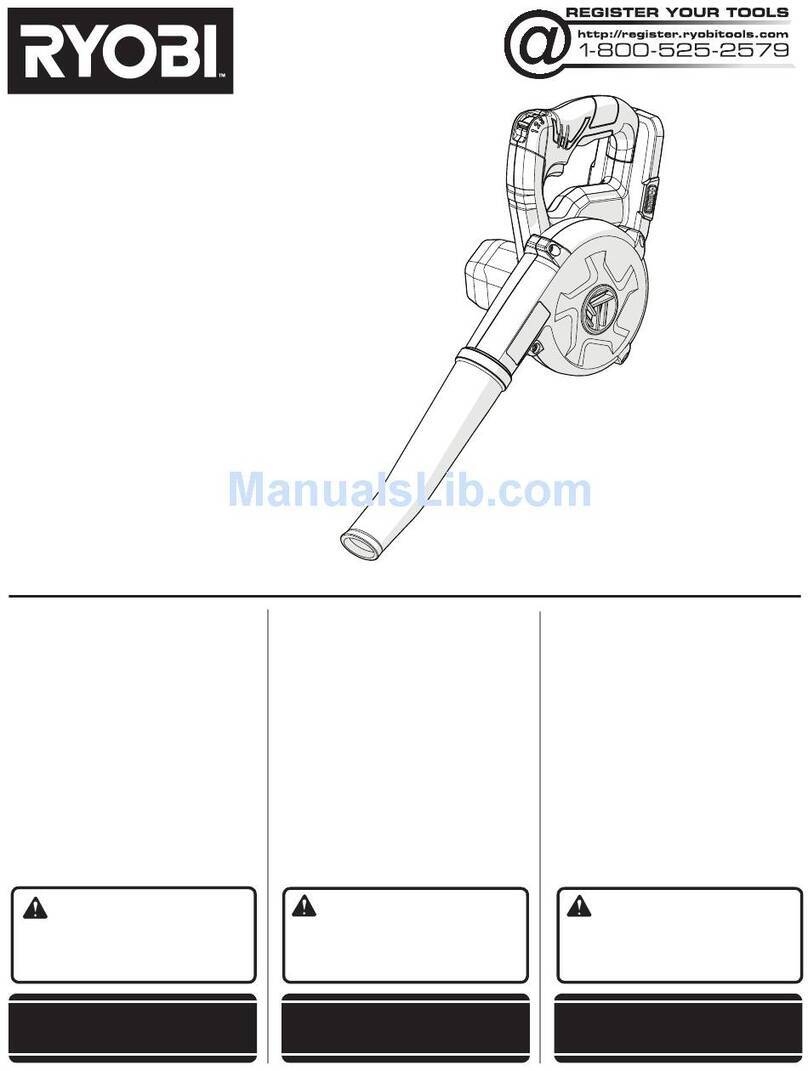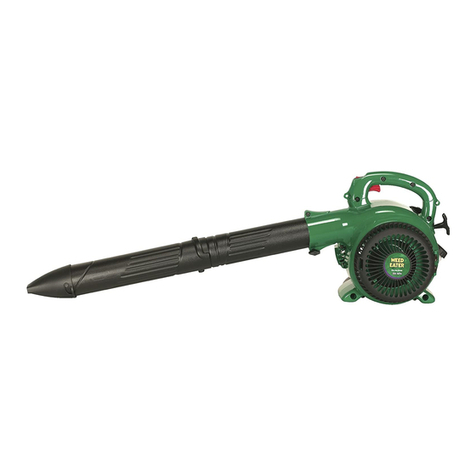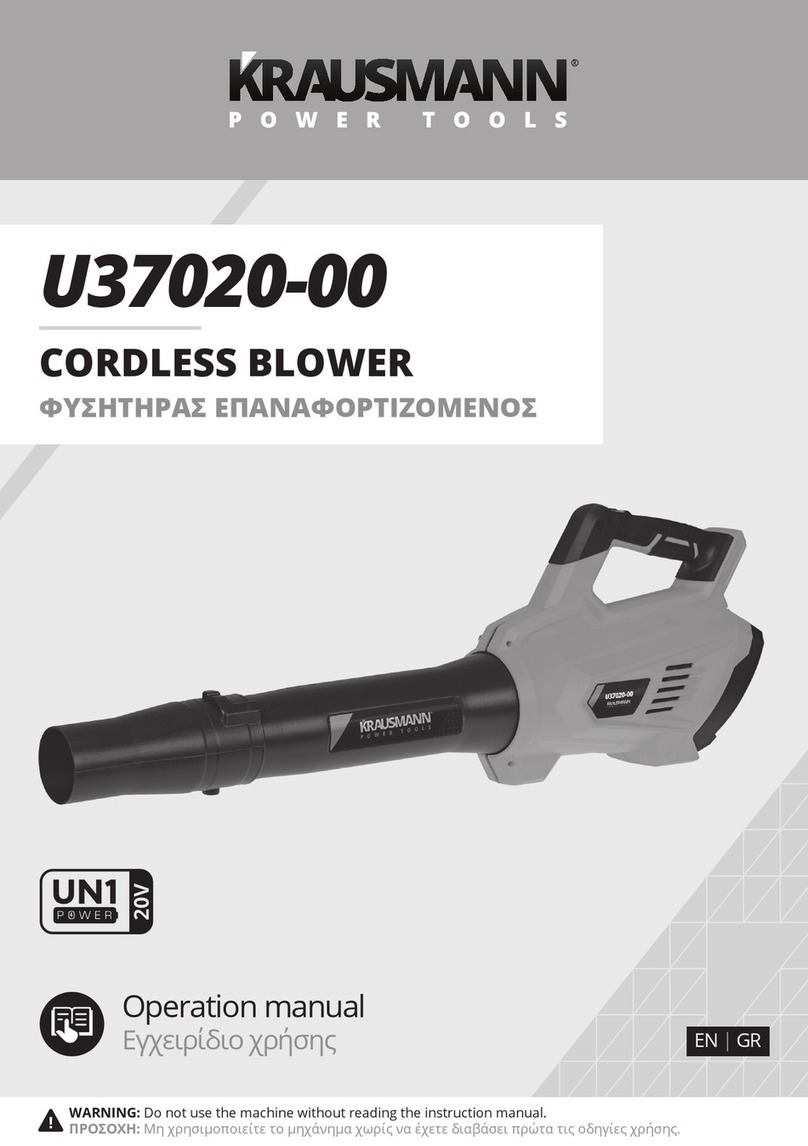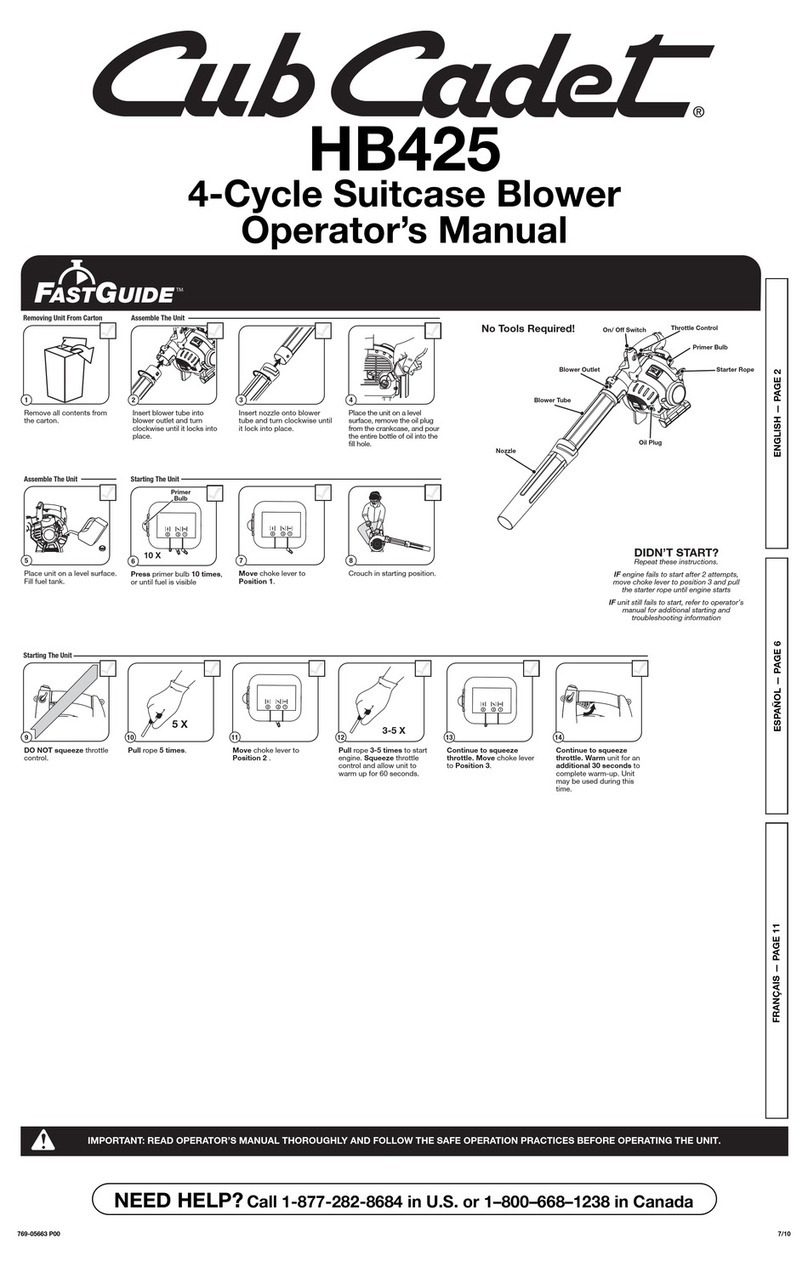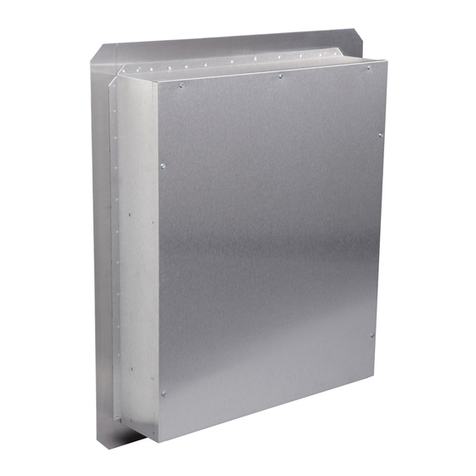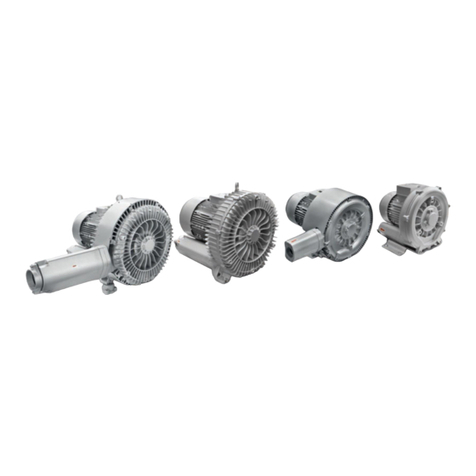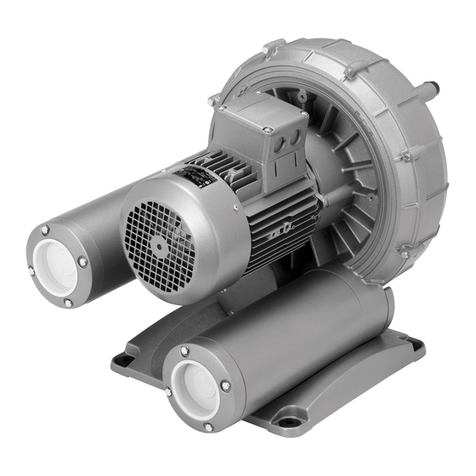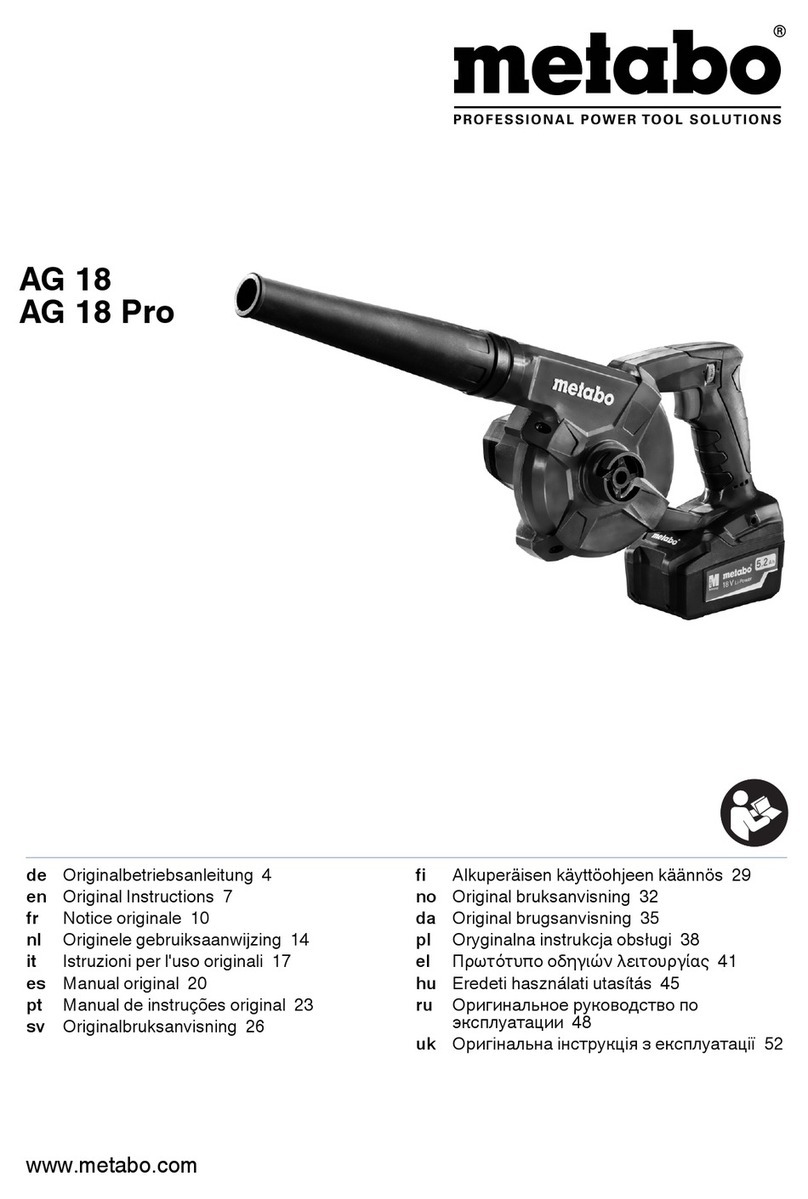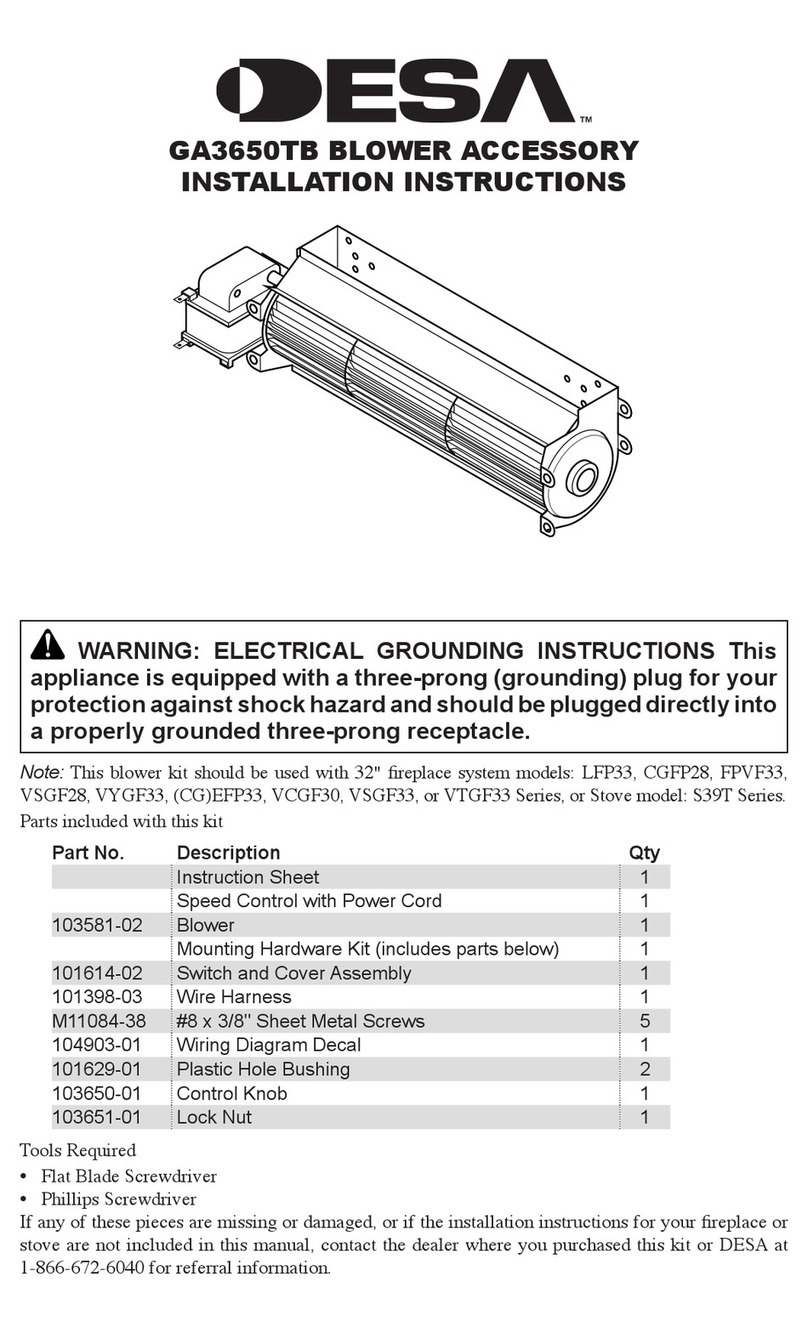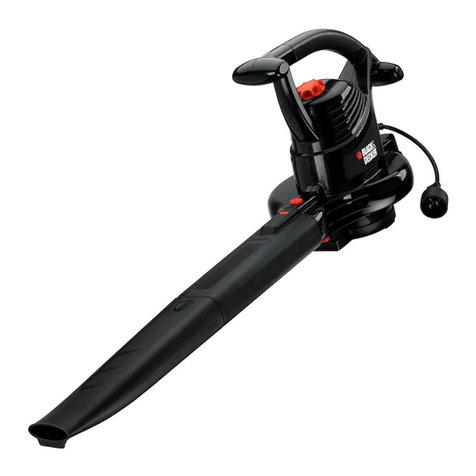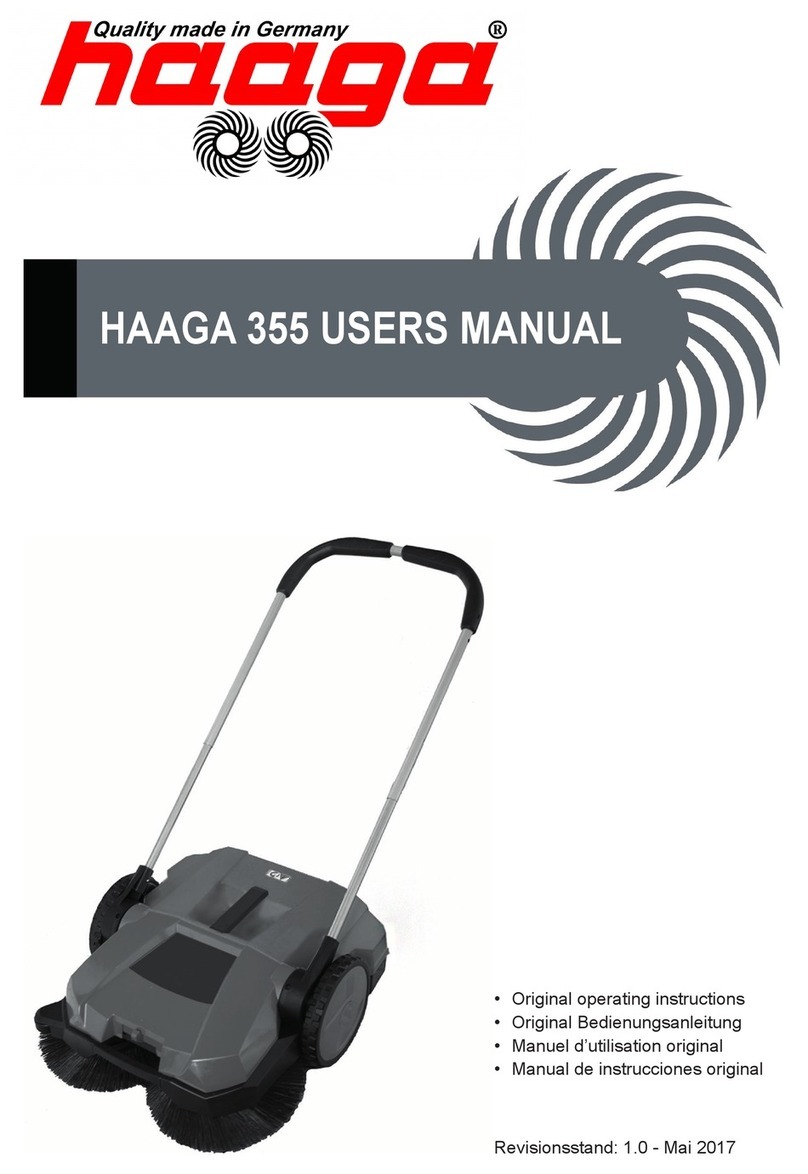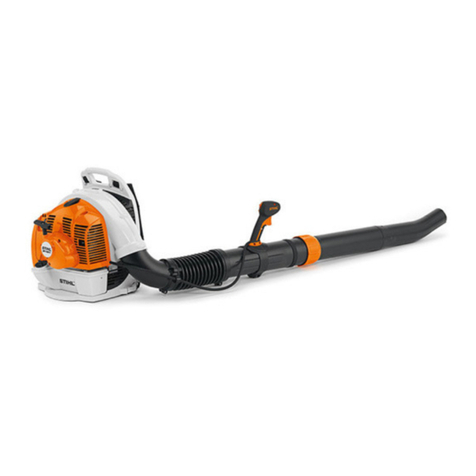
1
Safety, performance, and dependability have
been given top priority in the design of your
electric blower/vacuum.
INTENDED USE
The product is only intended for use outdoors.
This product is not intended to be used by
children or persons with reduced physical,
mental, or sensory capabilities.
The product is intended for blowing light
debris including leaves, grass, and other
garden refuse. It is intended to vacuum and
lightly mulch debris and deposit it into the
collection bag. It is not designed to suck or
vacuum water or other liquid.
WARNING
When using the product, the safety rules
must be followed. For your own safety
and that of bystanders, you must read and
fully understand these instructions before
operating the product. Please keep these
instructions safe for later use.
WARNING
This product is not intended to be used by
children or persons with reduced physical,
mental, or sensory capabilities. Children
should be adequately supervised to ensure
they do not play with the product.
GENERAL SAFETY WARNINGS
TRAINING
■Read the instructions carefully. Be familiar
with the controls and the correct use of the
product.
■Never allow children, persons with reduced
physical, sensory or mental capabilities
or lack of experience and knowledge, or
people unfamiliar with these instructions
to use the product. Local regulations may
restrict the age of the operator.
■Keep in mind, that the operator or user
is responsible for accidents or hazards
occurring to other people or their property.
■Keep bystanders, children and pets 15 m
away from the area of operation. Stop the
product if anyone enters the area.
■Never use the product when you are tired,
ill or under the influence of alcohol, drugs
or medicine.
ELECTRICAL SAFETY
■Power plugs must match the outlet. Never
modify the plug in any way. Do not use
any adapter plugs with earthed (grounded)
power tools. Unmodified plugs and
matching outlets will reduce risk of electric
shock.
■Avoid unintentional starting. Always check
that the switch is in the Off position before
plugging in the product to the power supply.
Do not carry a plugged in product with your
finger on the switch.
■Avoid body contact with earthed or
grounded surfaces, such as pipes,
radiators, ranges, and refrigerators. There
is an increased risk of electric shock if your
body is earthed or grounded.
■Do not expose the product to rain or wet
conditions. Water entering an appliance
will increase the risk of electric shock.
■Electrical power should be supplied via
a residual current device (RCD) with a
tripping current of not more than 30 mA.
■Before every use, examine the power cord
for damage. If there are signs of damage,
it must be replaced. Always uncoil the
power cord during use; coiled cables can
overheat.
■If you need to use an extension cord,
ensure it is suitable for outdoor use and has
a current capacity rating sufficient to supply
your tool. The extension cord cable should
be marked with either “H05 RN F” or “H05
VV F”. Check the extension cord before
every use for damage. Always uncoil the
extension cord during use because coiled
cords can overheat. Damaged extension
cords should not be repaired, they should
be replaced with an equivalent type.
■Make sure the power cord is positioned so
that it will not be stepped on, tripped over or
otherwise subjected to damage or stress.
■Never pick up or carry the product by the
electric cable.
■Never pull by the power cord to disconnect
from the power supply.
■Keep the power cord away from heat, oil
and sharp edges.





